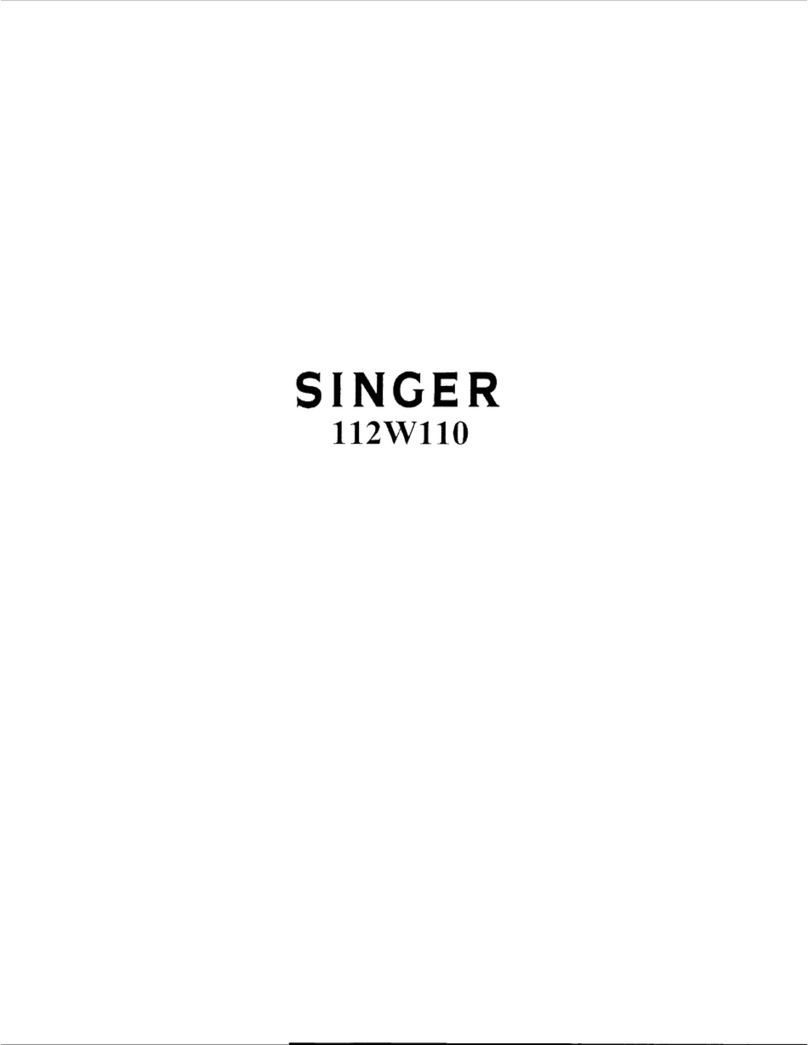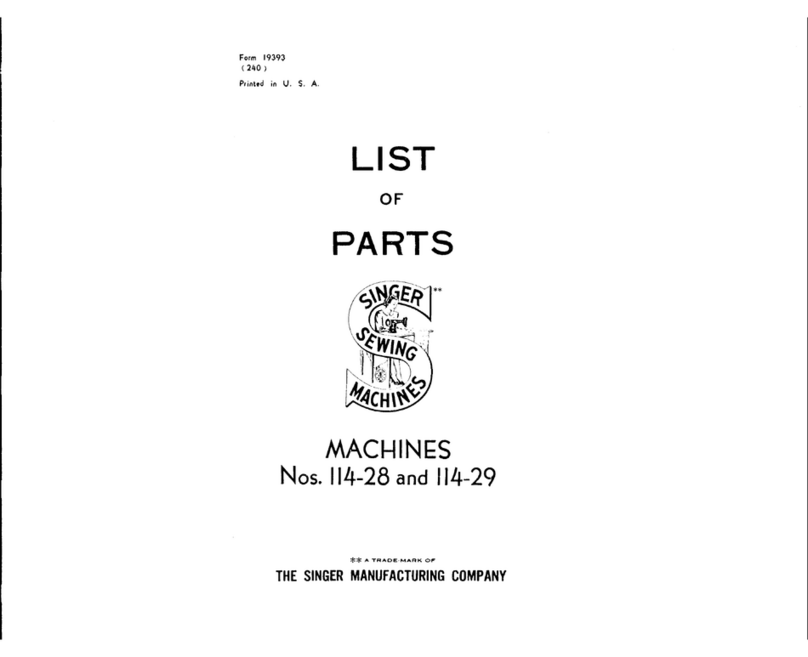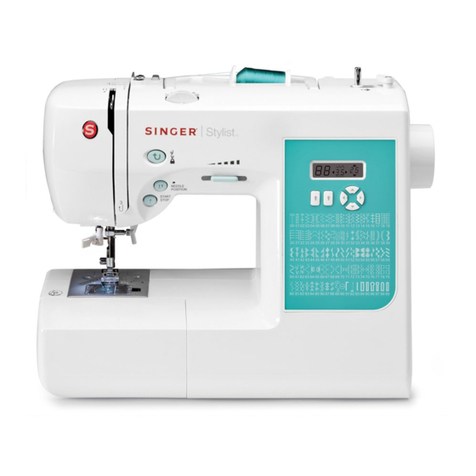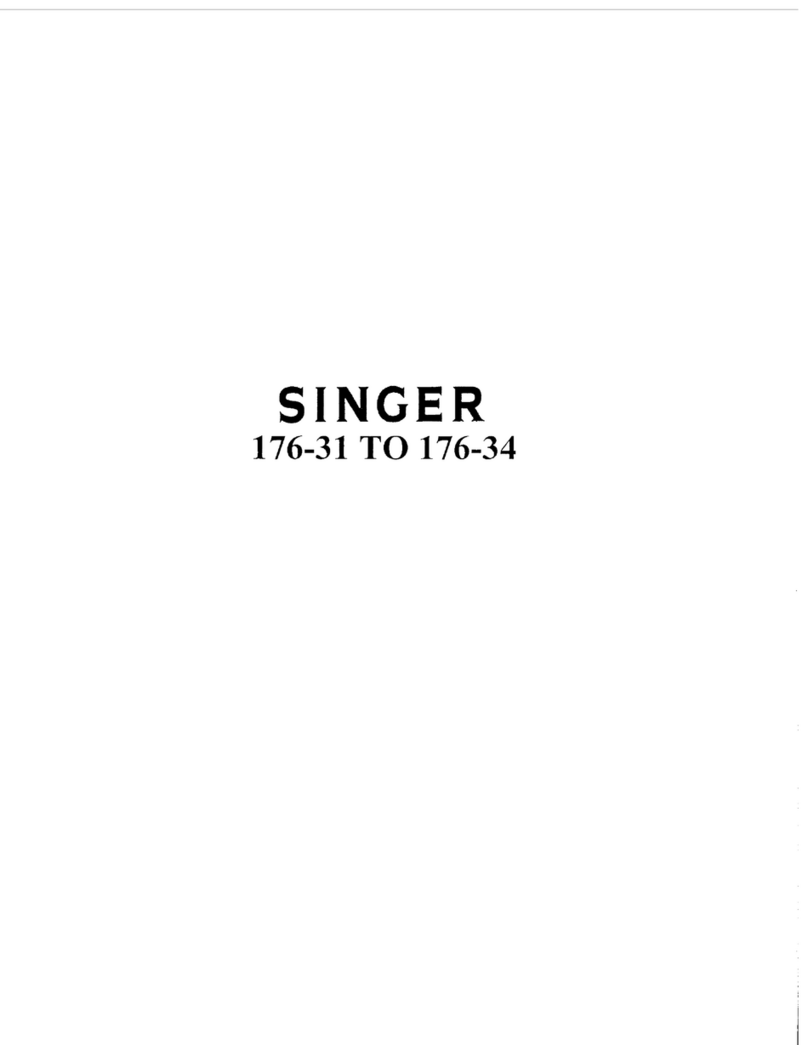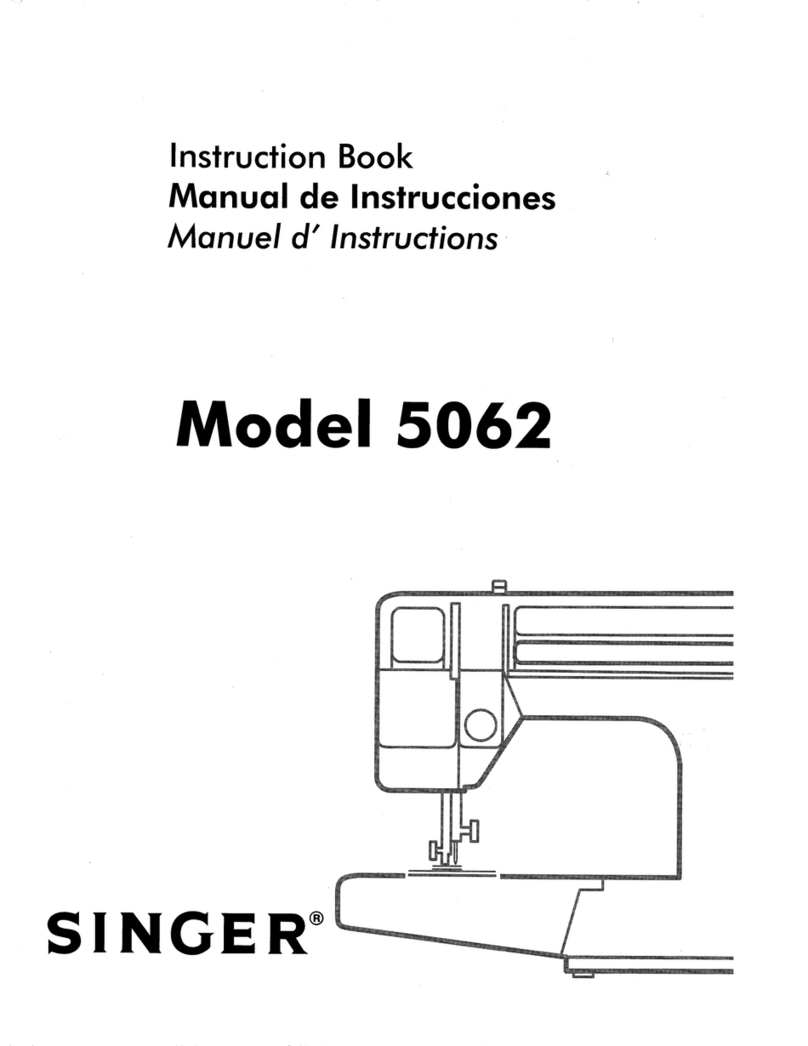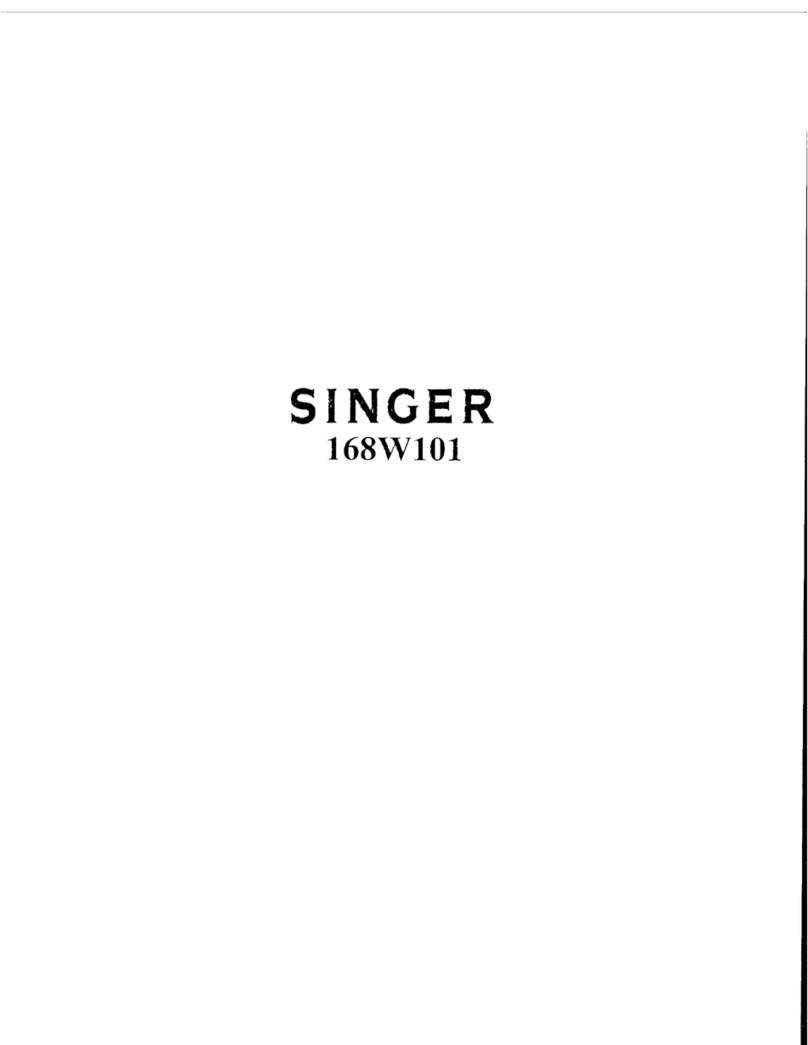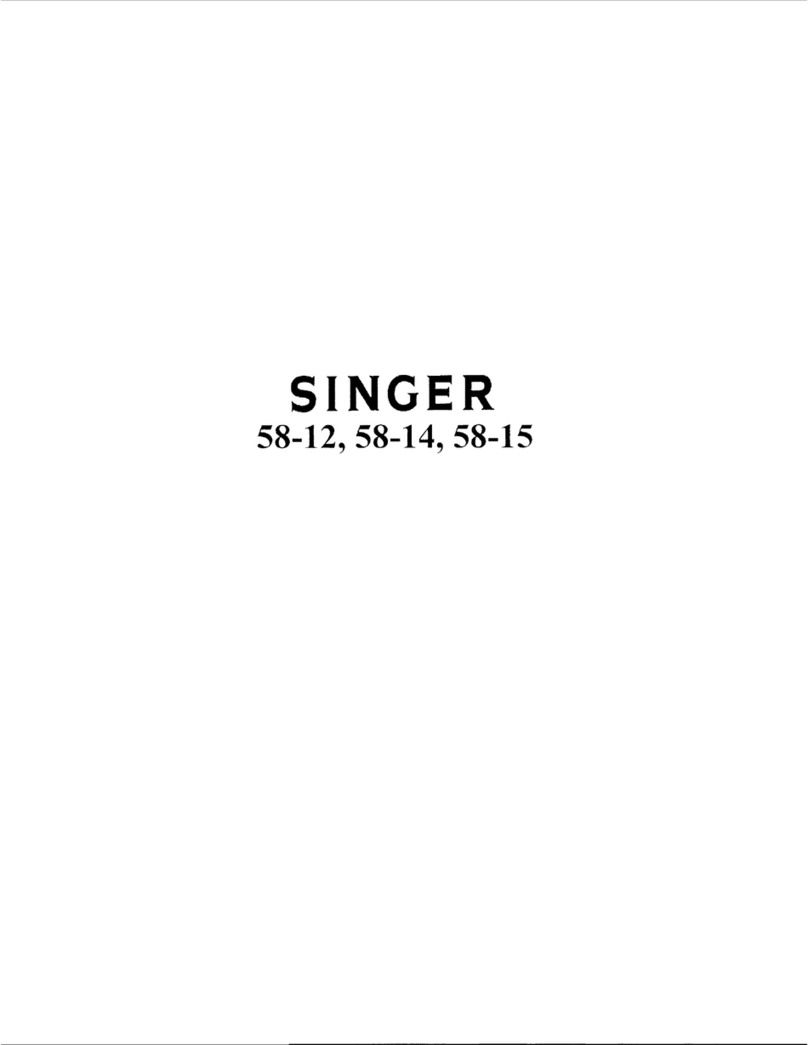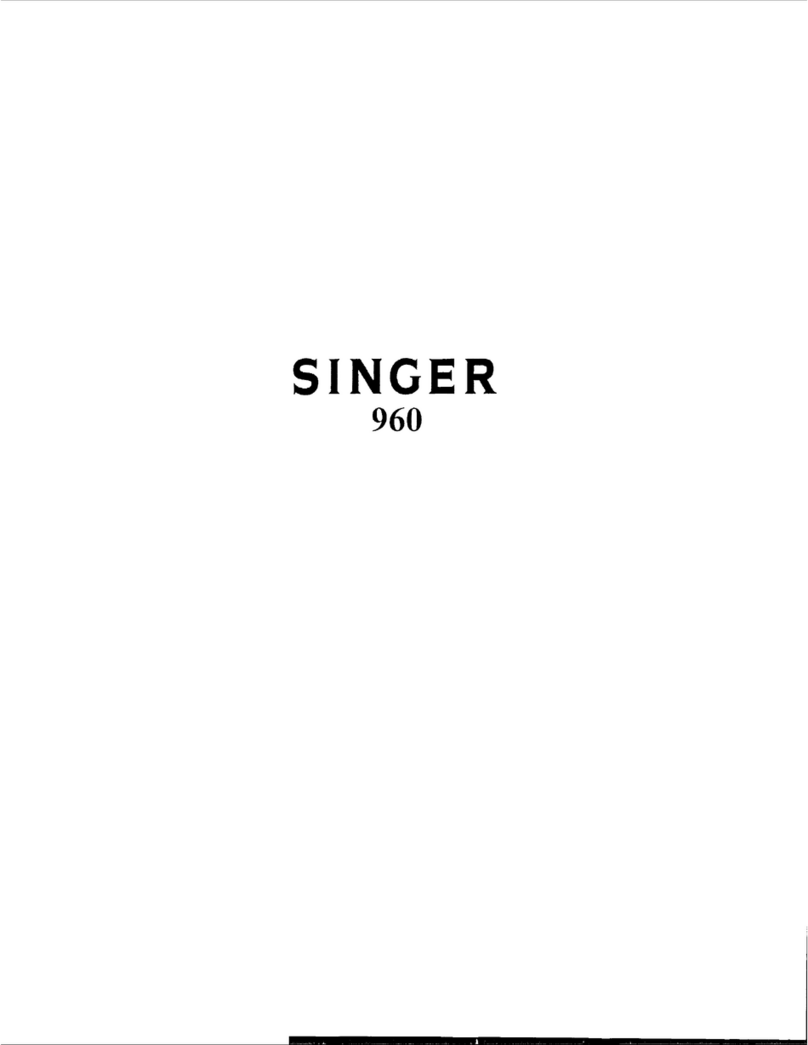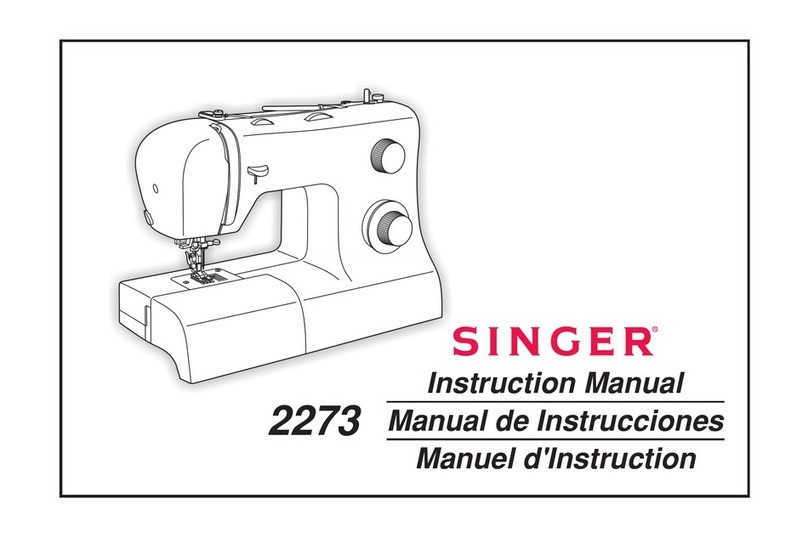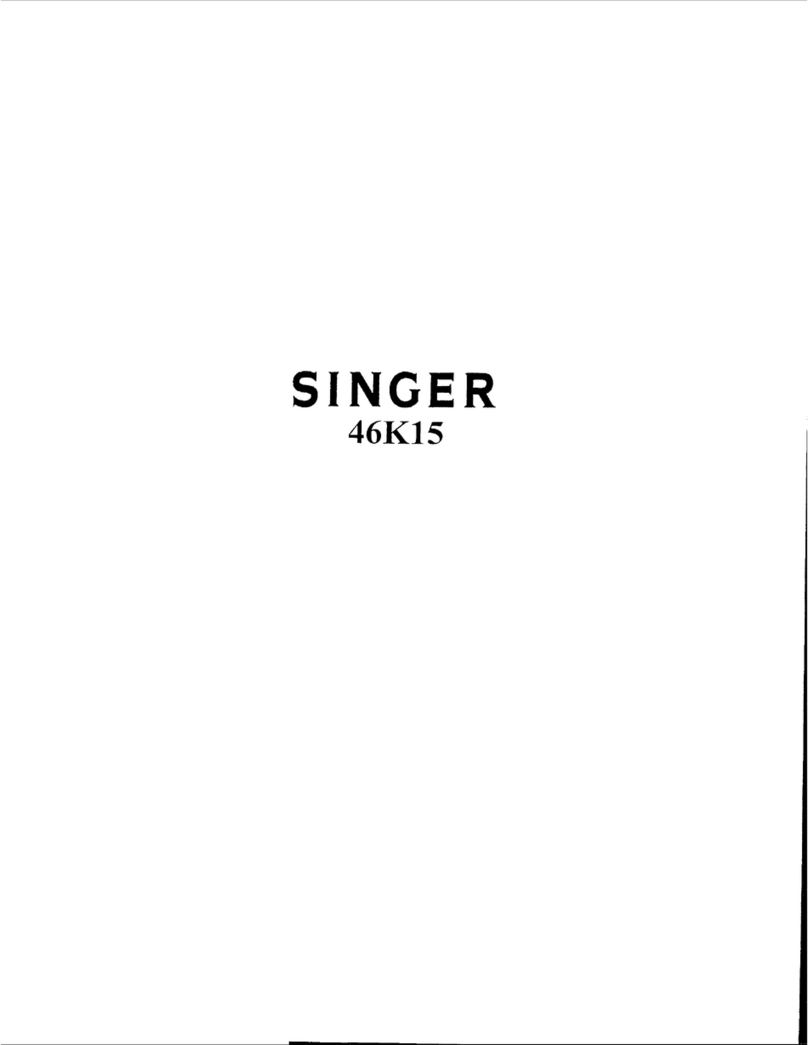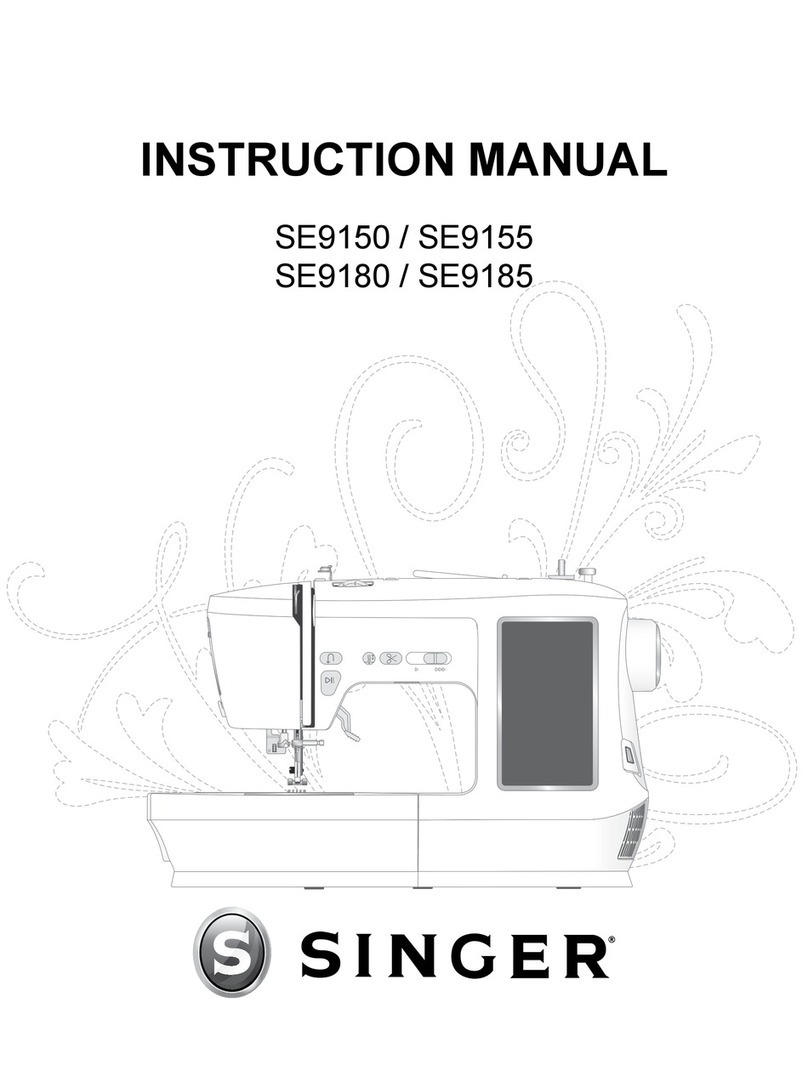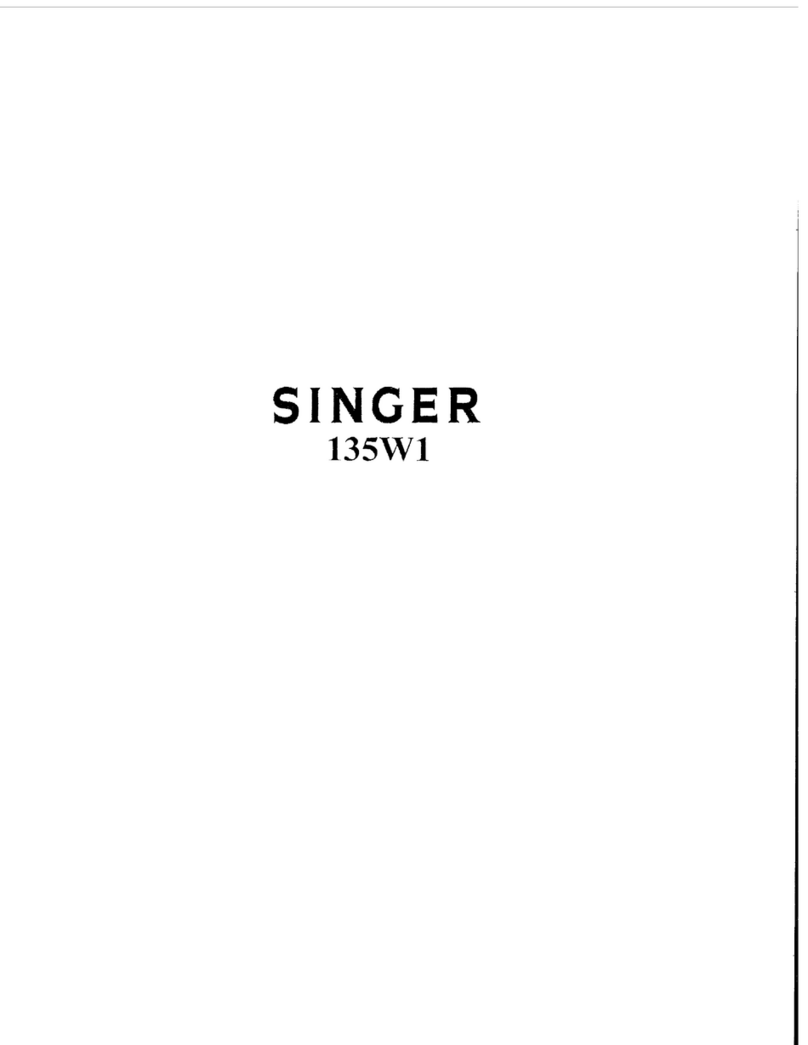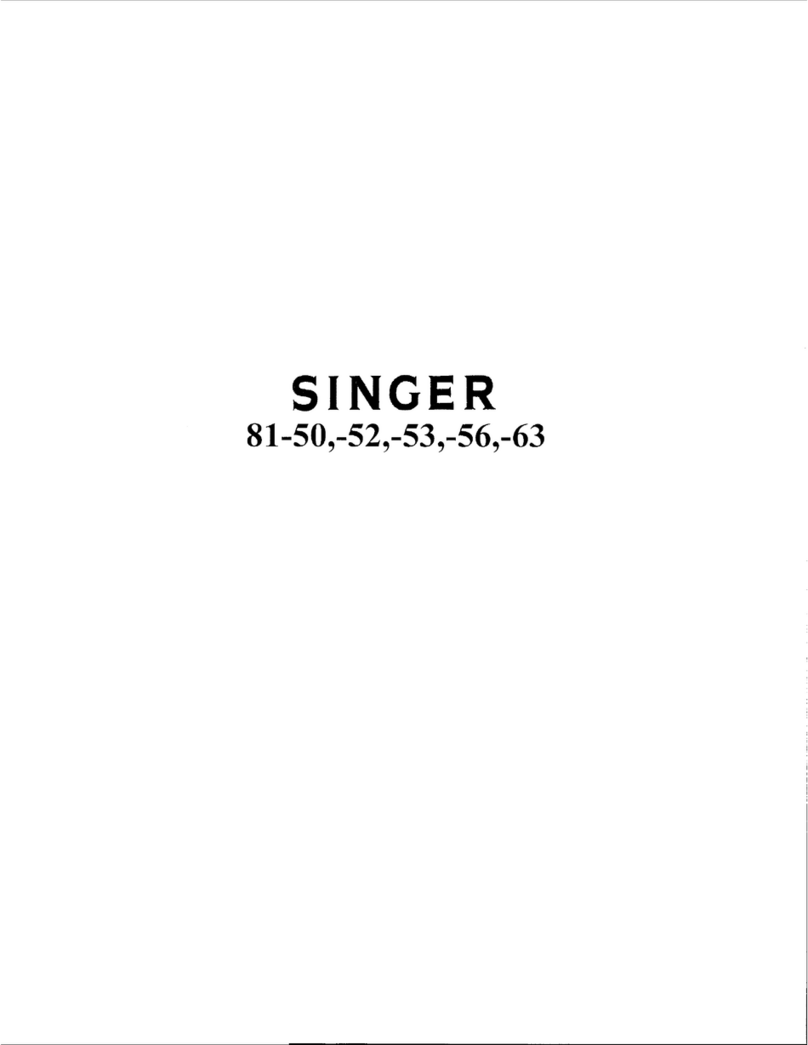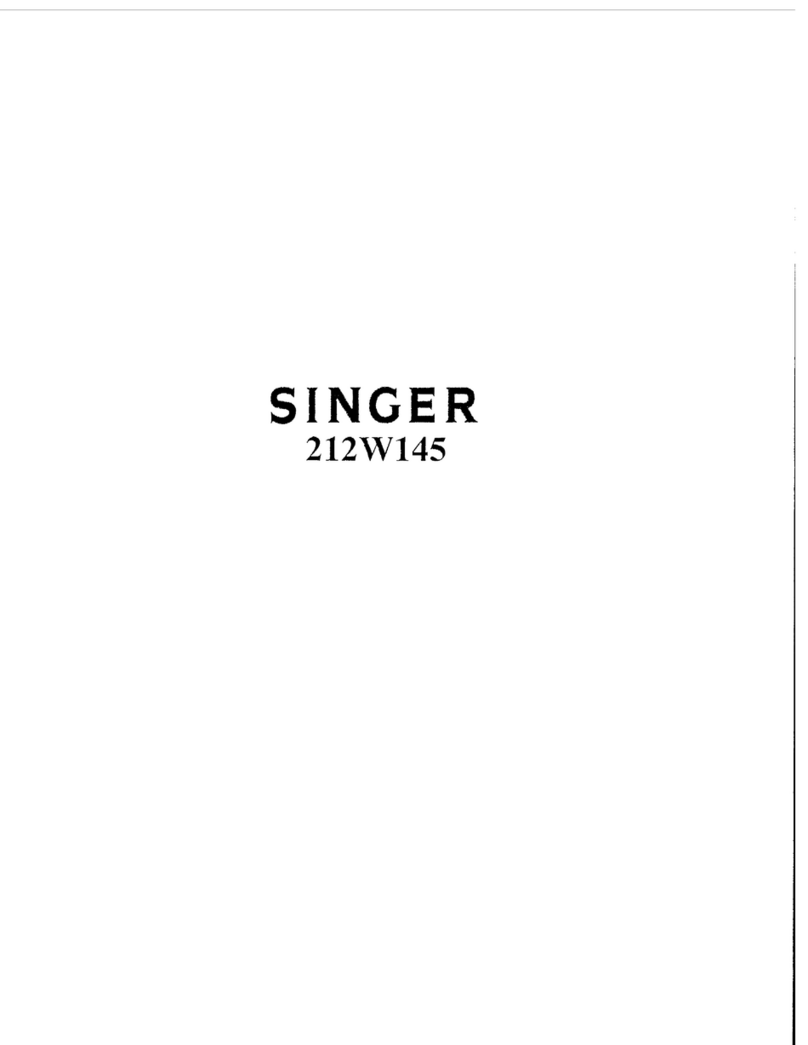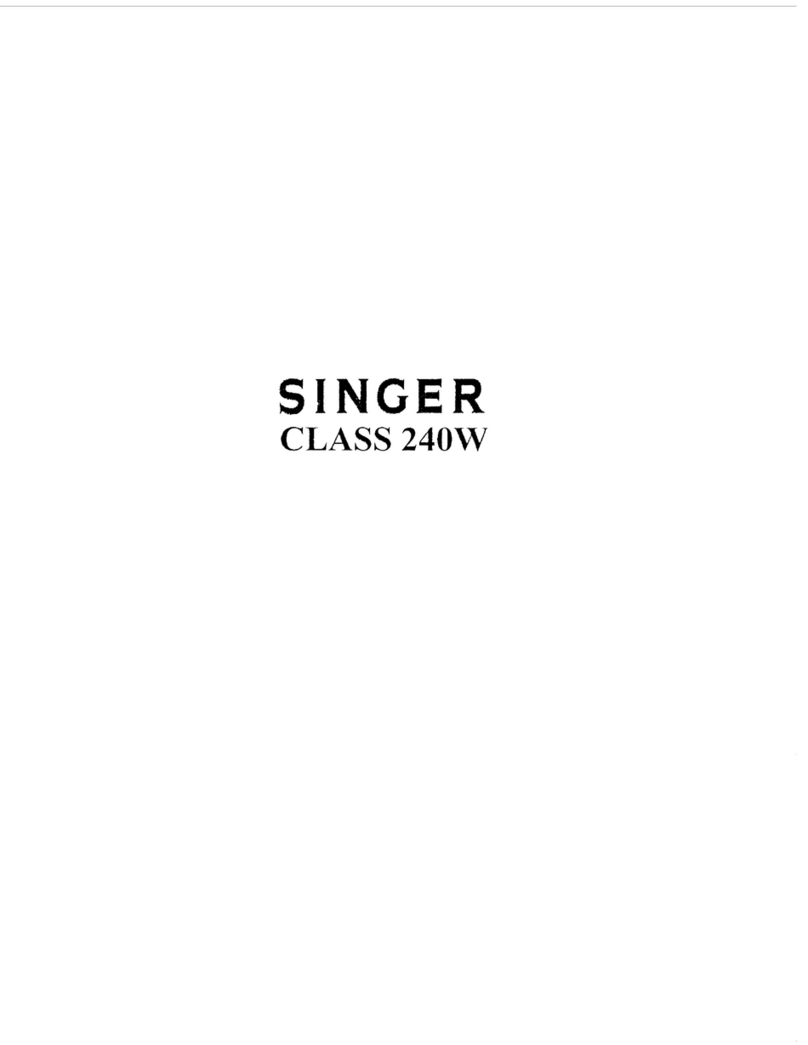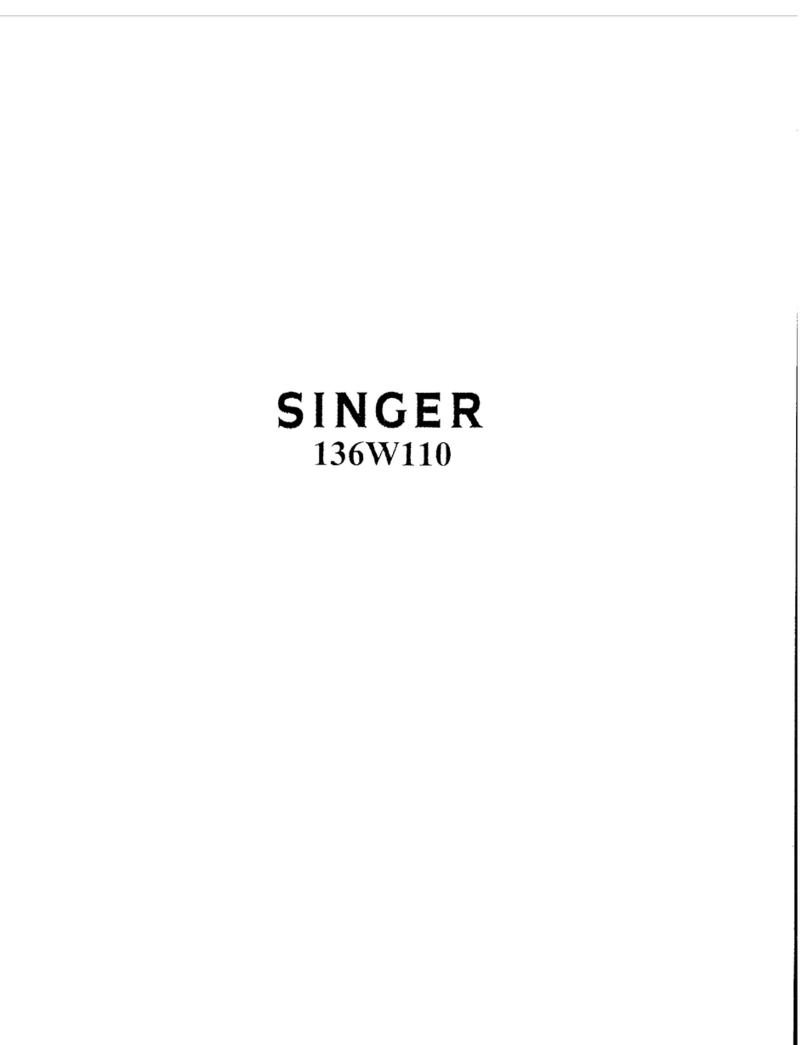
3
CONTENTS
IMPORTANT SAFETY INSTRUCTIONS.............2
MODEL 4060....................................................... 8
FOR EUROPEAN AND SIMILAR TERRITORIES:.......8
MAIN PARTS.....................................................10
ACCESSORIES.................................................12
DUST COVER...................................................12
EXTENSION TABLE..........................................14
a. REMOVING THE EXTENSION TABLE..................................14
b. OPENING THE ACCESSORY CASE.....................................14
CHANGING THE PRESSER FOOT.................. 14
A. Changing the presser foot......................................................14
B. Removing the presser foot holder ..........................................14
INSERTING THE NEEDLE ...............................16
FABRIC, THREAD AND NEEDLE TABLE.........16
CONNECTING THE MACHINE.........................18
FOOT CONTROLLER.......................................18
FUNCTION OF EACH PART............................. 20
A. START/STOP BUTTON..........................................................20
B. REVERSE STITCH BUTTON.................................................20
C. NEEDLE UP-DOWN / SLOW BUTTON................................20
D. SPEED CONTROL BUTTON.................................................20
E. PRESSER FOOT LIFTER......................................................20
F. THREAD CUTTER BUTTON .................................................22
G. DROP FEED LEVER..............................................................22
H. THREAD CUTTER.................................................................22
I. TOP COVER...........................................................................22
J. HAND WHEEL........................................................................22
EXTRA WIDE TABLE ........................................22
CONTROL PANEL.............................................24
A. L.C.D. DISPLAY......................................................................24
B. PATTERN CHART..................................................................24
C. DIRECT STITCH SELECTION BUTTONS.............................24
D. UTILITY STITCH BUTTON.....................................................24
E DECORATIVE & LETTER STITCH BUTTON.........................24
F. FUNCTION BUTTONS...........................................................24
G. EDIT BUTTON........................................................................24
H. CLEAR BUTTON....................................................................26
I. SCROLL BUTTONS...............................................................26
J. CURSOR BUTTONS..............................................................26
K. TACK BUTTON.......................................................................26
L. TWIN NEEDLE BUTTON.......................................................26
TO TURN OFF THE AUDIBLE BEEP................ 26
TOADJUST THE CONTRAST OF LCD............26
BOBBIN SETTING ............................................ 28
A. REMOVING THE BOBBIN .....................................................28
B. SETTING SPOOL OF THREAD ON SPOOL PIN..................28
C. WINDING THE BOBBIN.........................................................28
D. INSERTING THE BOBBIN .....................................................30
THREADING THE MACHINE............................32
A. PREPARING TO THREAD MACHINE ...................................32
B. SETTING SPOOL OF THREAD ON SPOOL PIN..................32
C. THREADING THE UPPER THREAD.....................................32
D. THREADING THE NEEDLE EYE...........................................34
E. DRAWING UPTHE BOBBIN THREAD..................................34
STARTING TO SEW..........................................36
A. START AND END OF SEAM..................................................36
B. REVERSE STITCHING..........................................................38
C. AUTO TACK STITCH .............................................................38
D. TURNING CORNERS............................................................40
E. SEWING HEAVY FABRIC......................................................40
F. SEWING OVER OVERLAPPED AREAS ..............................40
G. WIDTH OF SEAM ALLOWANCE...........................................40
THREAD TENSION...........................................42
SELECTING UTILITY STITCH PATTERN.........44
A. DIRECT STITCH PATTERN...................................................44
B. SELECTING OTHER UTILITY STITCH PATTERNS..............44
C. MIRROR/REVERSE STITCH.................................................44
D. ELONGATION ........................................................................46
E. SETTING STITCH WIDTH AND LENGTH.............................46
WHERE TO USE EACH STITCH...................... 48
STRAIGHT STITCH SEWING........................... 50
A. Straight Stitch.........................................................................50
B. Straight Stitch With Auto-lock Stitch (Pattern No. 3, 4)...........50
BASTING...........................................................52
A. ATTACHING THE DARING/ EMBROIDERY FOOT...............52
B. BASTING................................................................................52
ELASTIC STITCH SEWING..............................54
QUILTING..........................................................54
A. Joining the pieces of fabric.....................................................54
B. Quilting ...................................................................................54
C. Hand Look Quilting Stitch (No. 8)...........................................54
ZIGZAG STITCH SEWING................................56
MULTI-STITCH ZIGZAG ................................... 56
FREE ARM SEWING......................................... 56
OVERCASTING-OVERLOCKING.....................58
A. USING THE OVERCASTING FOOT......................................58
B. USING THE GENERAL PURPOSE FOOT ............................58
C. NOTE: .....................................................................................58
BLIND HEM STITCHING...................................60
PATCH WORK...................................................62
APPLIQUE.........................................................62
INSERTING ZIPPERS
CENTERED INSERTION..................................64
LAPPED INSERTION........................................66
To stitch around the zipper tab: (Diagram A)................................66
BUTTONHOLE SEWING .................................. 68
BOUND BUTTONHOLE....................................72
EYELET.............................................................74
AUTOMATIC BAR-TACKAND DARNING.........76
SEWING ON BUTTONS ...................................78
A. Thread Shank.........................................................................78
NARROW HEMMING........................................ 80
CORDING..........................................................80
A. SINGLE CORDING ................................................................80
B. TRIPLE CORDING.................................................................80
CONTINUOUS DECORATIVE PATTERN.........82
A. SEWING THIN FABRICS.......................................................82
USING THE EVEN-FEED FOOT ......................82
A. ATTACHING THE EVEN-FEED FOOT...................................82
B. SEWING.................................................................................82
DARNING/FREE-HAND EMBROIDERY........... 84
A. ATTACHING THE DARING/ EMBROIDERY FOOT...............84
B. DARING..................................................................................84
C. FREE-HAND EMBROIDERY..................................................84
D. After darning or free-hand embroidery ...................................84
TWIN NEEDLE SEWING ..................................86
DECORATIVE & LETTER STITCH SEWING.... 88
A. SELECTING DECORATIVE & LETTER STITCH (selecting
mode) .....................................................................................88
B. SHIFTING THE CURSOR......................................................88
C. TO CHECK SELECTED PATTERNS .....................................90
D. INSERTING PATTERN...........................................................90
E. TO DELETE PATTERN ..........................................................90
F. EDITING OF EACH PATTERN...............................................92
G. TO RECALL THE SELECTED PATTERNS............................94
H. SEWING THE SELECTED PATTERNS.................................96
I. TO SEW PATTERN FROM BEGINNING ...............................96
DECORATIVE AND LETTER STITCH CHART.98
ADJUSTING THE FORWARD AND REVERSE STITCHES
98
MAINTENANCE .............................................. 100
CLEANING......................................................100
Messages on LCD...........................................102
HELPFUL HINTS.............................................104


